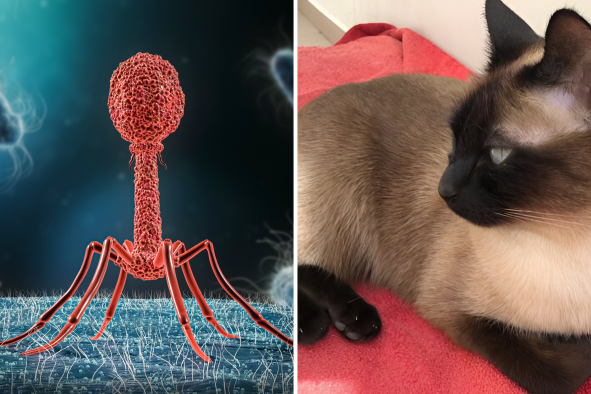Bird flu virus has been detected in dairy cows in the United States for the first time.
The detection of the H5N1 virus suggests there is now a new phase in the virus' spread among mammals, researchers from Atlanta's Emory University said.
"We have moved into new territory," Thomas Gillespie, an ecologist, professor, and chair of Emory University's Department of Environmental Sciences, said in a statement. "You can find this trend around the world, almost anywhere you look. This virus has an extremely broad range of hosts that it is able to infect."
Bird flu has been spreading among animals since 2022. This latest finding clearly shows a global pattern among the virus.
Scientists have long known that bird flu can infect mammals. They generally catch it when they are exposed to the virus in a contaminated environment or when they eat infected birds. However, it seems the number of mammals contracting the virus is increasing rapidly.
The virus is killing masses of elephant seals, sea lions, and seals in South America. In March 2023, 3,487 sea lions were reported dead in Peru, most of them from the virus.
According to Gillespie, there needs to be more research into how the virus is spreading so rapidly—especially as other factors, such as climate change, are also threatening the world's mammals.
It is possible that there is another, previously undetected cause of its spread. According to Gillespie, the virus may now be being transferred from mammal to mammal.
"Not enough surveillance is done in wildlife to know for sure how the virus is spreading," Gillespie said in a statement. "Some of the species that are at risk for bird flu are already battling the stressors of climate change and loss of habitat."
Since 2022, bird flu has been found in 200 mammals in the U.S. More recently, a study detailed the first-ever case of a bottlenose dolphin in the U.S. Other mammals, such as foxes, bobcats, mountain lions, coyotes, and black and brown bears, have contracted the virus.
In 2023, a polar bear became the first of its species to die from the virus. Bird flu has even made its way into the remote Antarctic, having been detected in native animals there including birds and elephant seals.
Each time a new mammal is found with the virus, it presents a new risk of its being transferred to others. It also gives the virus more chances to mutate, making it more dangerous. This, in turn, could make it more transmissible to humans. The current risk to humans is very low; however, that does not mean this won't change in the future.
Gillespie notes that bird flu detected in pigs presents a very worrisome scenario. Due to their immune systems' similarities with humans, the animals can act as mixing vessels for viruses.
He said that deforestation and industrialized animal production are both major factors driving the risk of pandemics. He called for reducing animal product consumption to mitigate these risks.
"The resulting cheap meat that we buy does not reflect the true costs to the ecosystems that sustain us," Gillespie said. "If we want to live sustainably, we need to cut down on the amount of animal products that we consume. That will be a win-win for human health and for planetary health."
Disclaimer: The copyright of this article belongs to the original author. Reposting this article is solely for the purpose of information dissemination and does not constitute any investment advice. If there is any infringement, please contact us immediately. We will make corrections or deletions as necessary. Thank you.



